Near Wilmington, a trove of never-seen, abstract Andrew Wyeth paintings are 'a revelation'
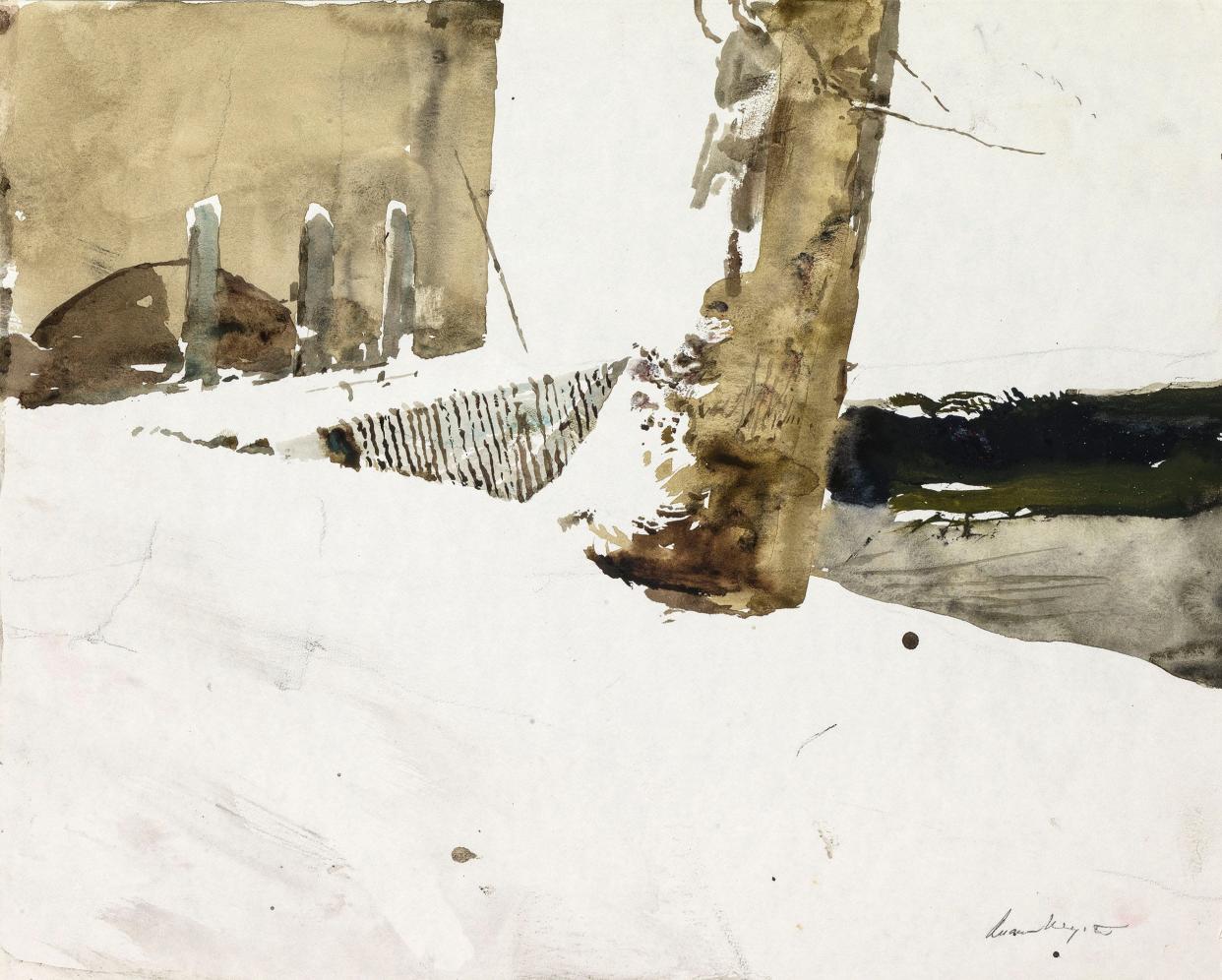
Landscape painters are rarely the stuff of big headlines, or shocking revelations.
And then there’s Andrew Wyeth.
The Delaware County painter, famous for his painstakingly realist portraits and landscapes, landed on the covers of both Newsweek and Time magazines simultaneously after revealing a “secret” cache of 268 intimate portraits he’d painted of his Chadds Ford neighbor, Helga Testorf.
But for some, the real shock is happening right now. The American master painter left thousands of never-seen paintings upon his death, Many were unlike anything he’d ever shown the world.
The Brandywine Museum of Art in Chadds Ford is showing dozens of never-before-seen abstract watercolors by the American master in its exhibit "Abstract Flash: Unseen Wyeth," on display until Feb. 18. The exhibit amounts to an epochal event in American painting that’s happening just a half-hour north of Wilmington.
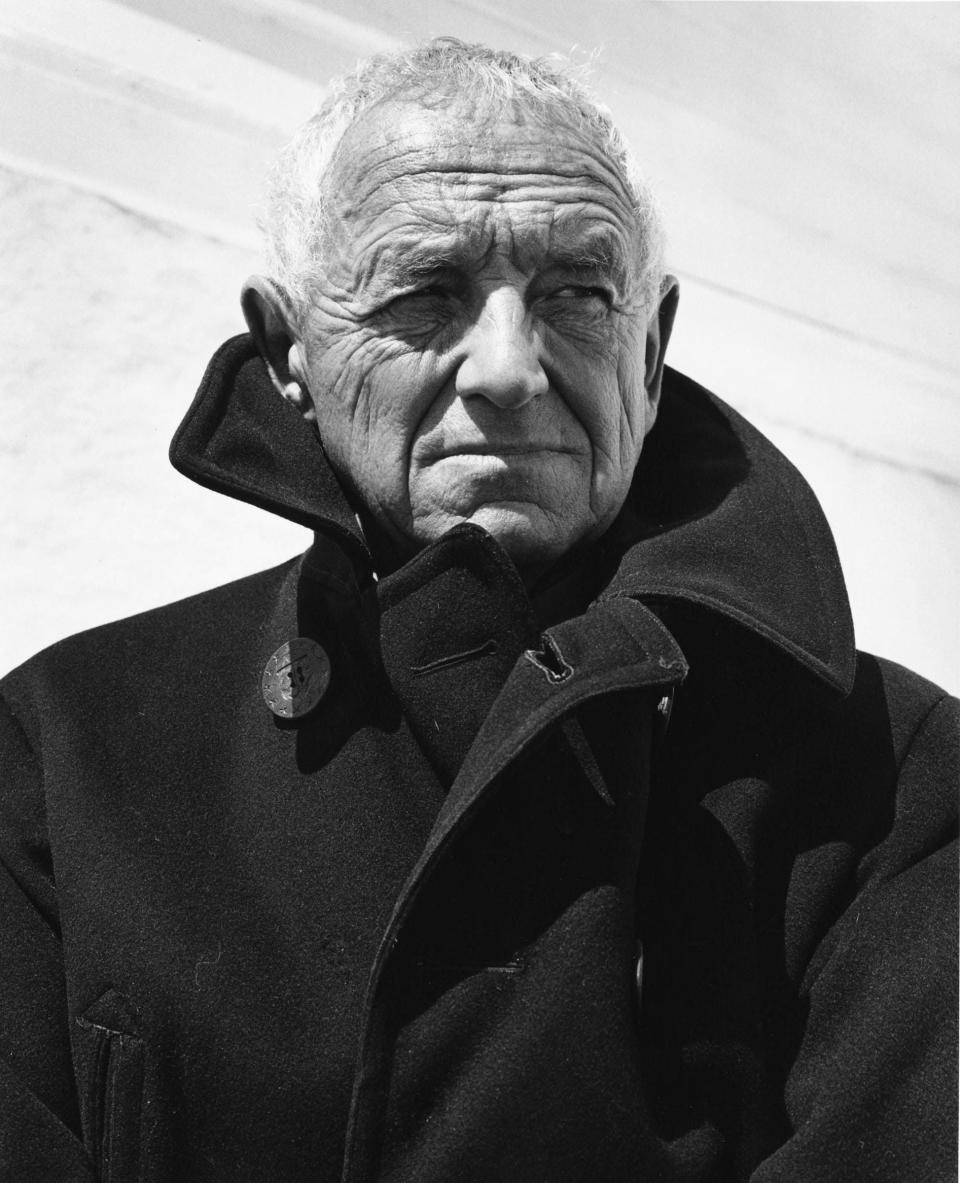
Wyeth is best known almost as a throwback, a meticulous realist devoted to landscapes and home spaces. But these unseen paintings show jarring flat walls of color. Tangles of branches framed so tightly they look like something out of Jackson Pollack. Near-expressionist watercolors. Something Wyeth called an “abstract flash like something you caught out of the corner of your eye.”
Was the last great American realist … also an abstract painter?
“These works represent some of the most spontaneous and free work that Andrew Wyeth ever produced," exhibition curator Karen Baumgartner said.
This abstract side to Wyeth amounts to nothing short of “a revelation,” said the Wyeth Foundation curator, William Coleman. The abstract compositions also help illuminate how “uncanny and highly original” Wyeth’s realist paintings have always been.
You can see it for yourself if you’d like. “Abstract Flash” is on display every day but Tuesday at the Brandywine Museum of Art, alongside some of Wyeth’s classic tempura landscapes.
Meanwhile, some familiar Wyeths are returning to Delaware, if only briefly. At “Wyeths: Three Generations” at Dover’s Biggs Museum of Modern Art starting Nov. 2, a collection from the whole Wyeth clan — father N.C., son Andrew, grandson Jamie — will be exhibited in Delaware for the first time in nearly 20 years. Much of the collection was acquired by Bank of America in 2006 and taken out of state after that bank bought out Wilmington-based holding company MBNA Corp.
We asked Wyeth curators Coleman and and Karen Baumgartner to pick out a few favorites among the never-before-seen Wyeths, at the history-making show at the Brandywine Museum of Art.
Previously: Never-seen Andrew Wyeths on display near Wilmington, with hundreds more to come
Andrew Wyeth: Untitled, 1948.

Baumgartner: “Here's one of the first works you'll see when you walk into the exhibition: This is a work from 1948, which is also the same (year) of course that Christina’s World was done. … Christina's World is highly detailed, highly realistic, but this is the kind of work he was doing at the same time during the same year.
Coleman: And 1948, In addition to being the year of Christina's World, is one year after the climactic moment of Jackson Pollock's first splatter painting. So this is a fascinating, challenging moment in the art world. And already at this moment, Wyeth is working in these big gestural forms. I think from the abstract expressionist movement in particular, he really admired their vitality, the energy, the gestural, all these kinds of qualities that he expressed a different visual way.
Andrew Wyeth: Ice Pool Study, 1969.

This is an almost abstract study of shapes, which developed into a famous 1969 Wyeth piece called Ice Pool.
Baumgartner: “I've always loved this one. It reminds me of Robert Motherwell that it's just all of these shapes that he's pulling together: what he feels about the moment. He's trying to express what caught his eye. This does develop into a very finished dry-brush, but not all of them do. ... This has a lot of abstract qualities, but you can guess that the ice pool is the circle in that dark space.”
Coleman: “He's capturing these really valuable originary moments. I've been thinking about it a little bit like how a musician in the woodshed will capture it with Voice Memo when they get an inspiration, a new melody.”
Andrew Wyeth: Untitled, 1961. Abstract painting at Kuerner Farm in Chadds Ford
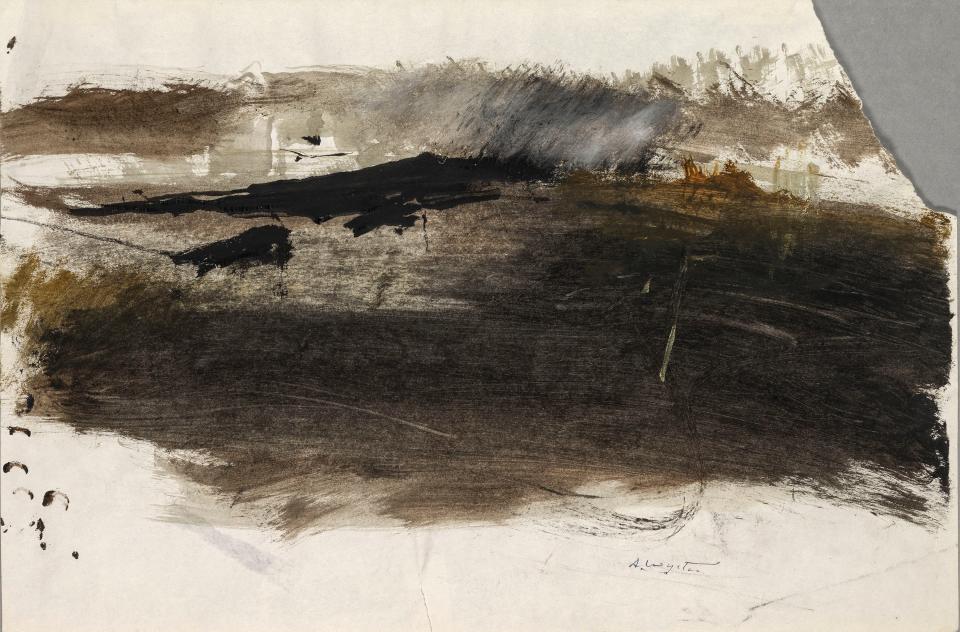
Coleman: “We know he's starting from a subject in the natural world. We know exactly where he's walking when he makes these things, when he comes up with these really unexpected results. ... We wanted to show the warts and all of this thing that was maybe not treated with reverence by the artist’s furious, creative process. Working quickly, things get torn and stepped on, and you really feel him working quickly. But it’s an astonishing scene.”
Andrew Wyeth: Untitled, 1968. Scene at Brandywine River later used as setting for his later painting, Breakup
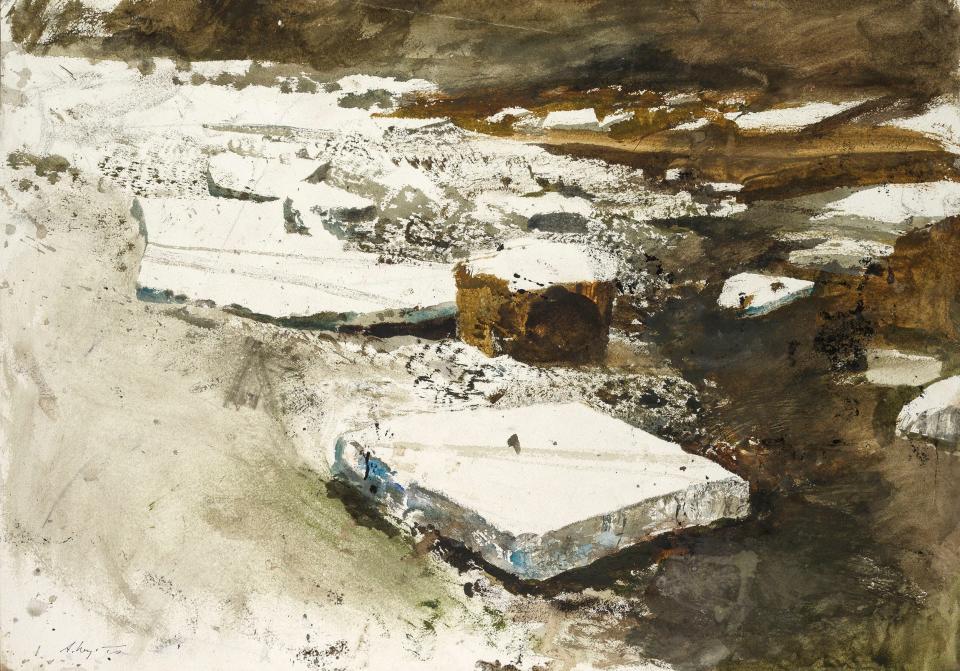
Baumgartner: “This one's untitled from the 1960s and it looks very abstract, if you're not familiar with a phenomenon that happens on the Brandywine when it gets very cold. These sheets of ice freeze and break up and pile up. And then they become what Betsy (Wyeth, Andrew’s wife) would call the ‘mattress sale.’ It has these unique shapes that I’ve never actually seen. … What he did was revisit this scene 20 years later, and that led to a finished piece called Breakup."
Letter from Andrew Wyeth to Edward Hopper, 1961. In Betsy James Wyeth's handwriting.
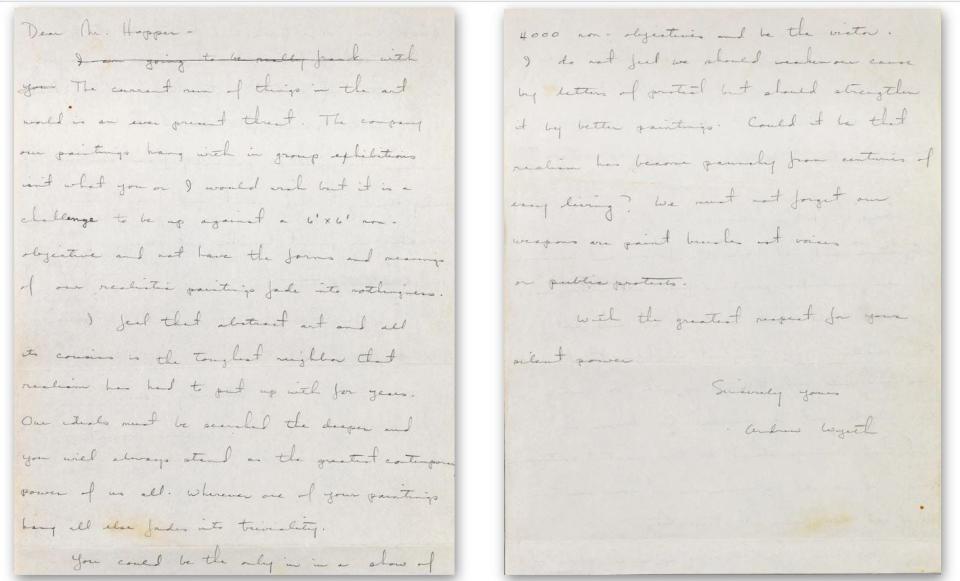
Coleman: “There’s a fascinating exchange of letters between Edward Hopper and Andrew Wyeth… this fascinating document. Edward Hopper writes to Andrew Wyeth requesting his signature for a petition … opposing the drift of the Whitney (Museum), this traditional stronghold of American social realists, toward abstraction.But in short, (Wyeth) says ‘No, I'm not signing your petition.’ And there's this great line that sticks in all of our minds: ‘Could it be that realism has grown paunchy from centuries of easy living?’... People who don't think they like Andrew Wyeth, think that Andrew Wyatt is a conservative who was threatened by the new, who was some country bumpkin who made these brown paintings.
The archival evidence begs to differ.”
"Abstract Flash: Unseen Andrew Wyeth" is on display until Feb. 18, 2024, at the Brandywine Museum of Art, 1 Hoffman's Mill Road, Chadds Ford, Pennsylvania, 610-388-2700, brandywine.org. "Wyeths: Three Generations" is on display from Nov. 2, 2023, to Feb. 11, 2024, at Biggs Museum of Modern Art, 406 Federal St., Dover, 302-674-2111, biggsmuseum.org.
This article originally appeared on USA TODAY NETWORK: Was Andrew Wyeth an abstract artist? New exhibit shows unseen works
